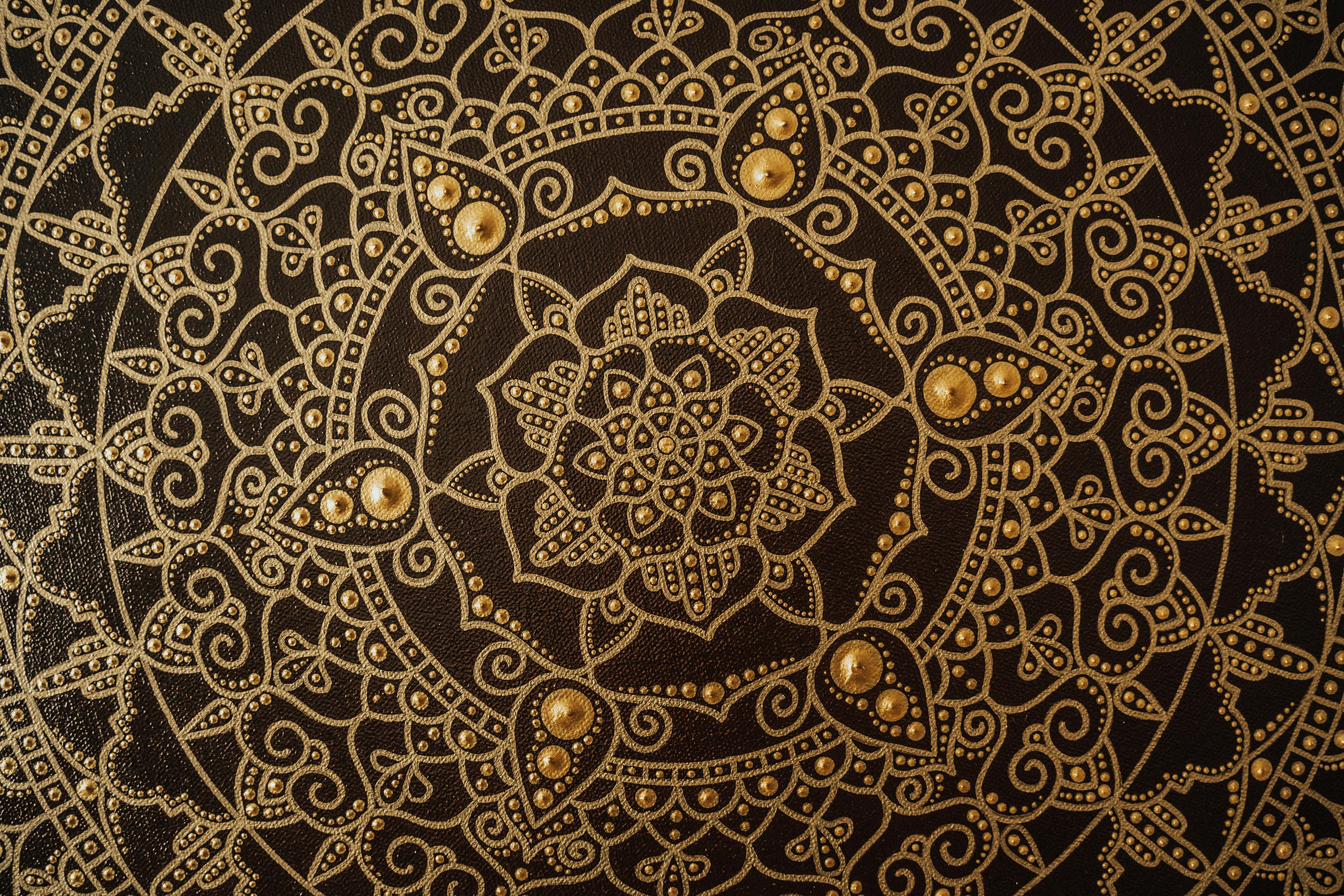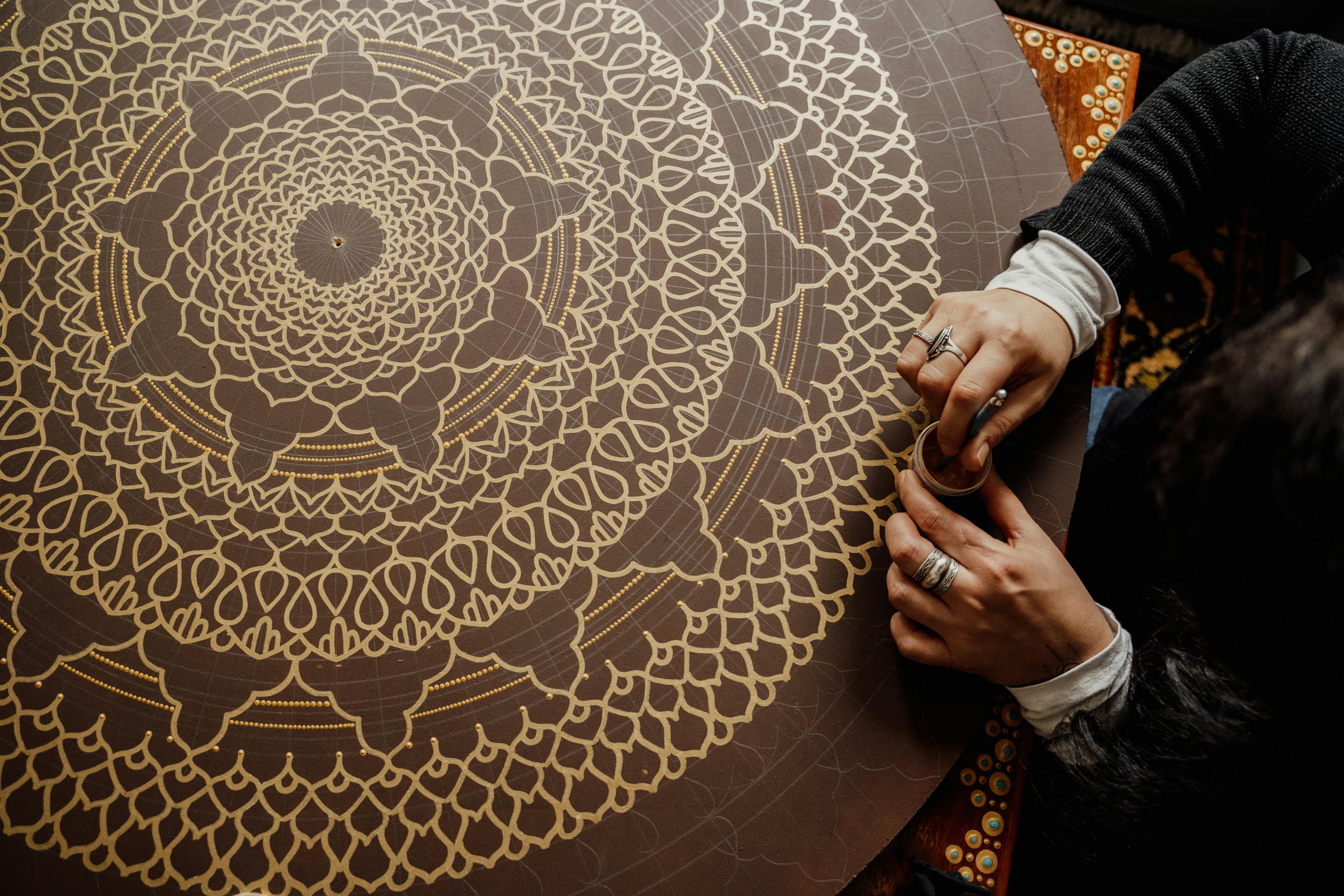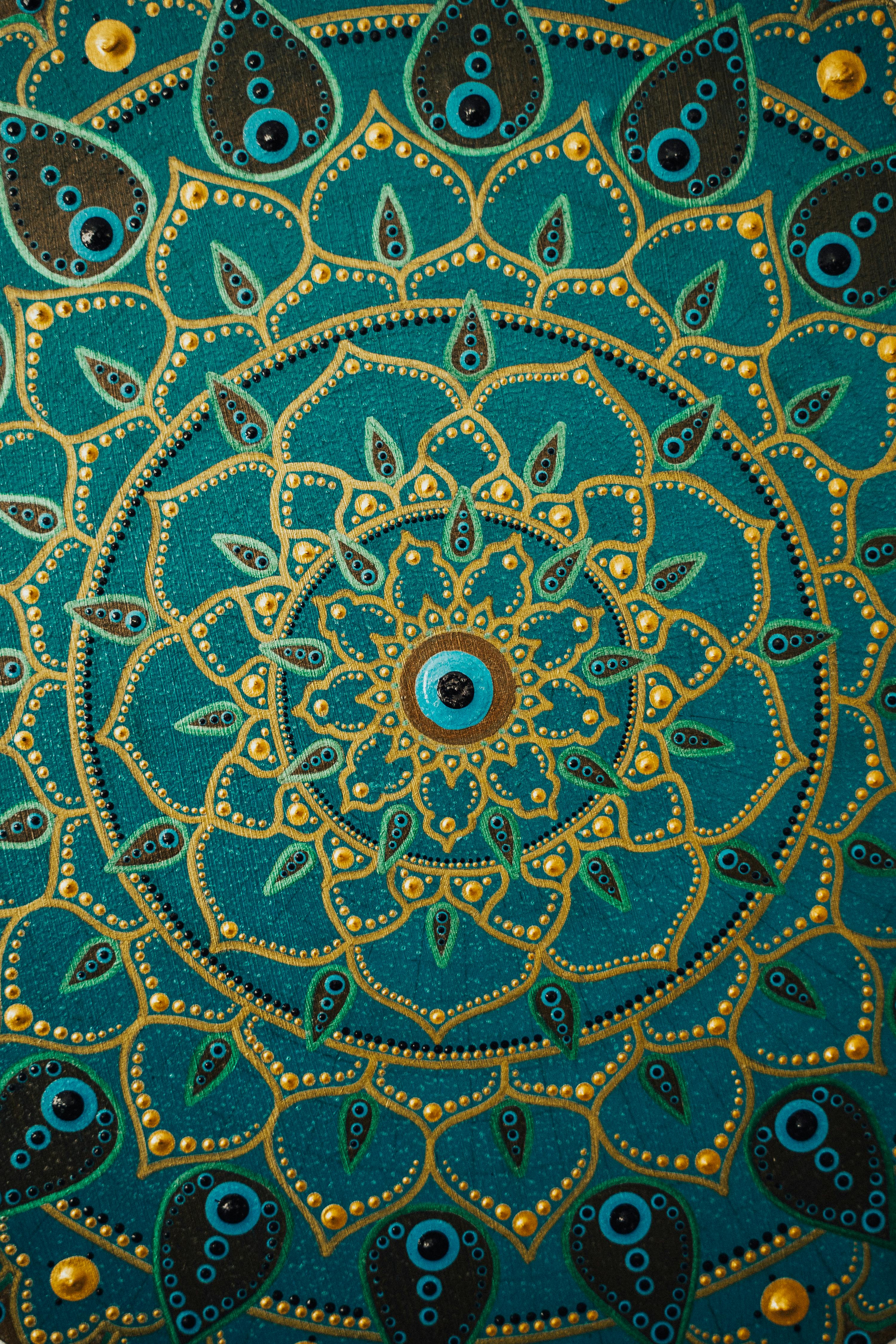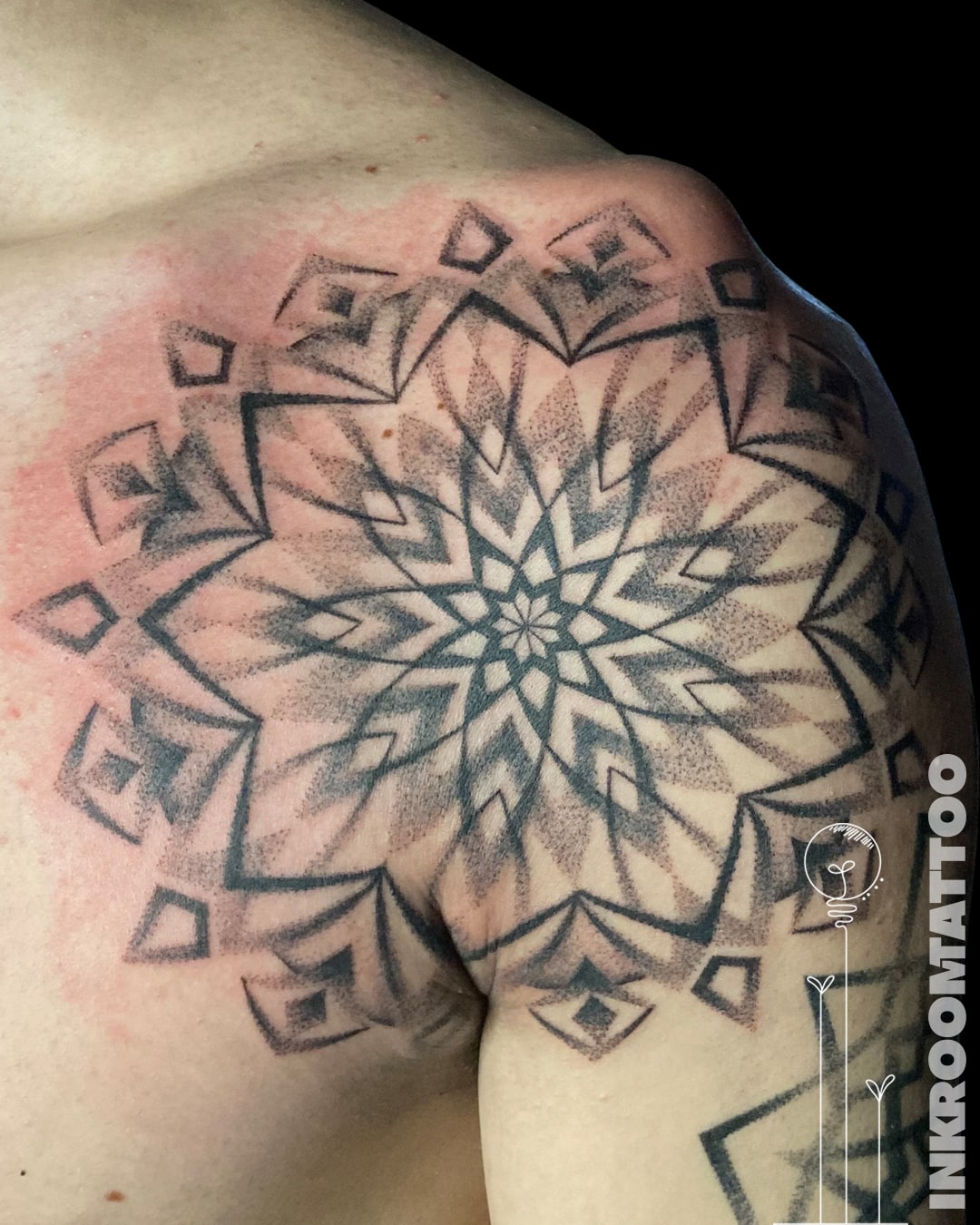The Origins of the Mandala: An Ancient Symbol Across Cultures
The word mandala comes from Sanskrit, meaning circle, wholeness, or sacred circle. It’s one of the most ancient spiritual symbols found across multiple continents. In Hinduism and Buddhism, mandalas are used as meditative tools, but circular, geometrically arranged symbols have also appeared in Native American, African, and Celtic cultures.
Tibetan Buddhist sand mandalas are especially detailed and created within ceremonial frameworks. These vibrant, colorful creations are not only artistic expressions but symbolize universal order and inner harmony.

The Spiritual Meaning and Symbolism of Mandalas
Inner Balance and Self-Awareness
A mandala is more than just a decorative motif — it carries deep symbolic meaning. The patterns radiating from the center reflect the journey inward, life cycles, and the return to one’s core. It represents wholeness, harmony, spiritual growth, and unity.
The Message of Colors and Shapes
-
Blue – calmness, wisdom, protection
-
Green – healing, growth, harmony
-
Red – passion, energy, life
-
Yellow – creativity, joy, intellect
-
Lotus motif – purity and enlightenment
-
Circle – eternity and unity
These colors and symbols together help reconnect with the self, process internal conflicts, and discover one’s life purpose.
Mandalas in Modern Times: Art, Therapy, and Design
Today, mandalas transcend spiritual and religious practice. They are embraced in art therapy, home design, fashion, and body art.
Mandala as Art Therapy
Creating mandalas — through coloring, painting, or digitally — is a powerful tool for stress relief and self-discovery. The repetition and symmetry induce a meditative state, helping to slow the mind. Psychologists and art therapists often use it to support self-expression.
Mandala as Home Décor and Fashion Element
Many homes now feature mandala wall art, textiles, or rugs that create a calming atmosphere. In fashion, mandala scarves, bags, and jewelry are more than style — they’re a statement to the world.

The Meaning of Mandala Tattoos
Mandala motifs hold a special place in the world of body art. A mandala tattoo is not only visually striking but also rich in meaning, often chosen for deep emotional or spiritual reasons.
Popular Types of Mandala Tattoos
-
Geometric Mandala Tattoos: precise, symmetrical designs representing the universe and order of life.
-
Floral Mandalas: blend the beauty of nature with life’s cycles.
-
Lotus Mandalas: symbols of spiritual awakening and enlightenment.
-
Tribal Mandalas: draw on ancient cultural motifs, often using bolder, darker tones.
Placement and Their Symbolic Messages
-
Back: symbolizes confidence and inner strength
-
Chest: close to the heart, representing emotions
-
Arm/Forearm: personal journey, growth, expression
-
Thigh: stability, independence, deep roots
For many, mandala tattoos are not just decorative — they are personal talismans, almost like a mantra etched into the skin, reminding the wearer of their core values.
Why Mandala Tattoos Are So Popular
-
Uniqueness – each mandala is one-of-a-kind, like a fingerprint
-
Beauty and Harmony – symmetry provides visual peace
-
Spirituality – more than just a drawing, it conveys meaning
-
Timelessness – mandalas are always relevant and never go out of style
Mandalas also combine beautifully with other elements: animals, symbols, and text. This allows for truly personalized designs that tell your story.
How to Choose a Mandala Tattoo
1. Reflect on the Meaning
Understand what message you want to send or what you need to be reminded of. A mandala always communicates something — from your inner world.
2. Choose Placement Carefully
It's not just an aesthetic decision: different parts of the body carry different meanings and pain levels.
3. Work with a Skilled Tattoo Artist
Mandala art is detailed and intricate. Choose someone with experience in geometric and symmetrical designs.
4. Design a Custom Pattern
Don’t copy! Avoid generic templates. Have a one-of-a-kind mandala created that truly represents you.

Mandala as a Life Philosophy
A mandala is much more than a beautiful design. It's a visual reflection of an inner journey. Whether you're coloring one or wearing it on your skin, the mandala always whispers: You are the center, and everything starts from within you.
The mandala helps you connect with yourself, calm the chaos, remember your wholeness, and live in harmony.






